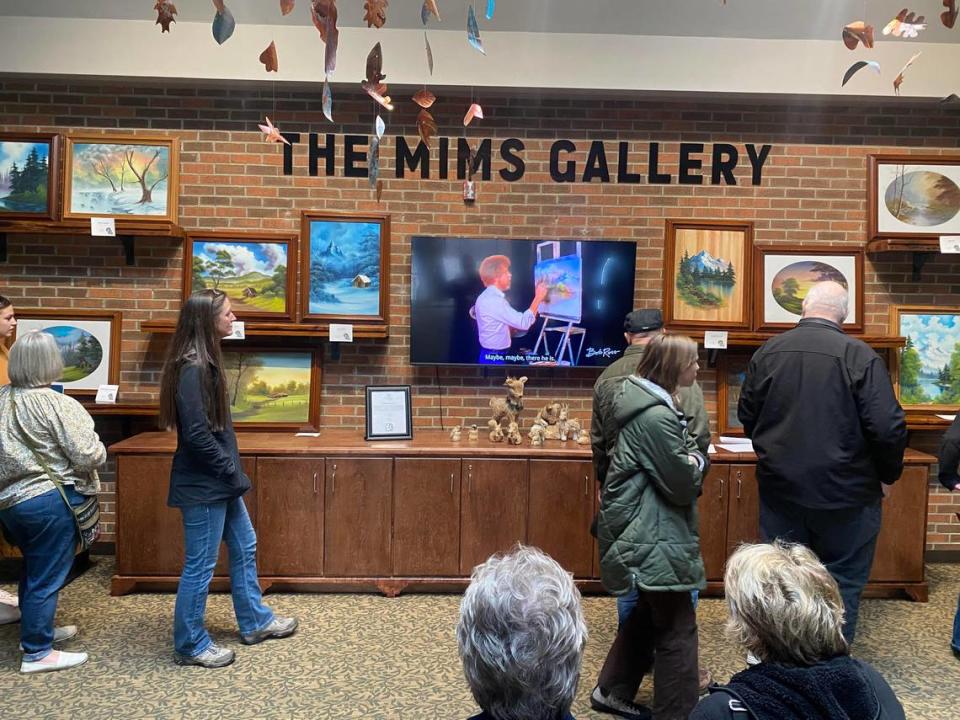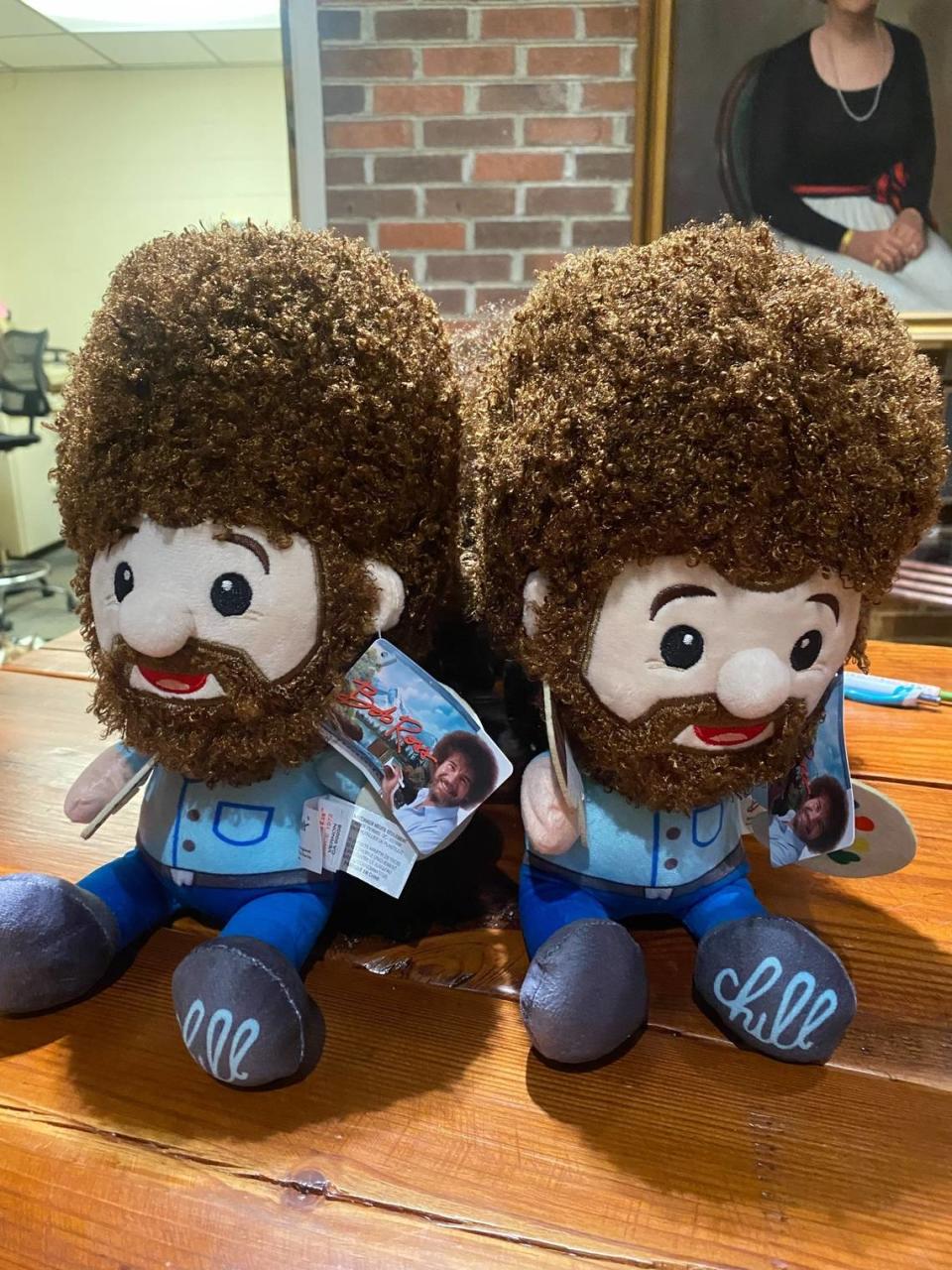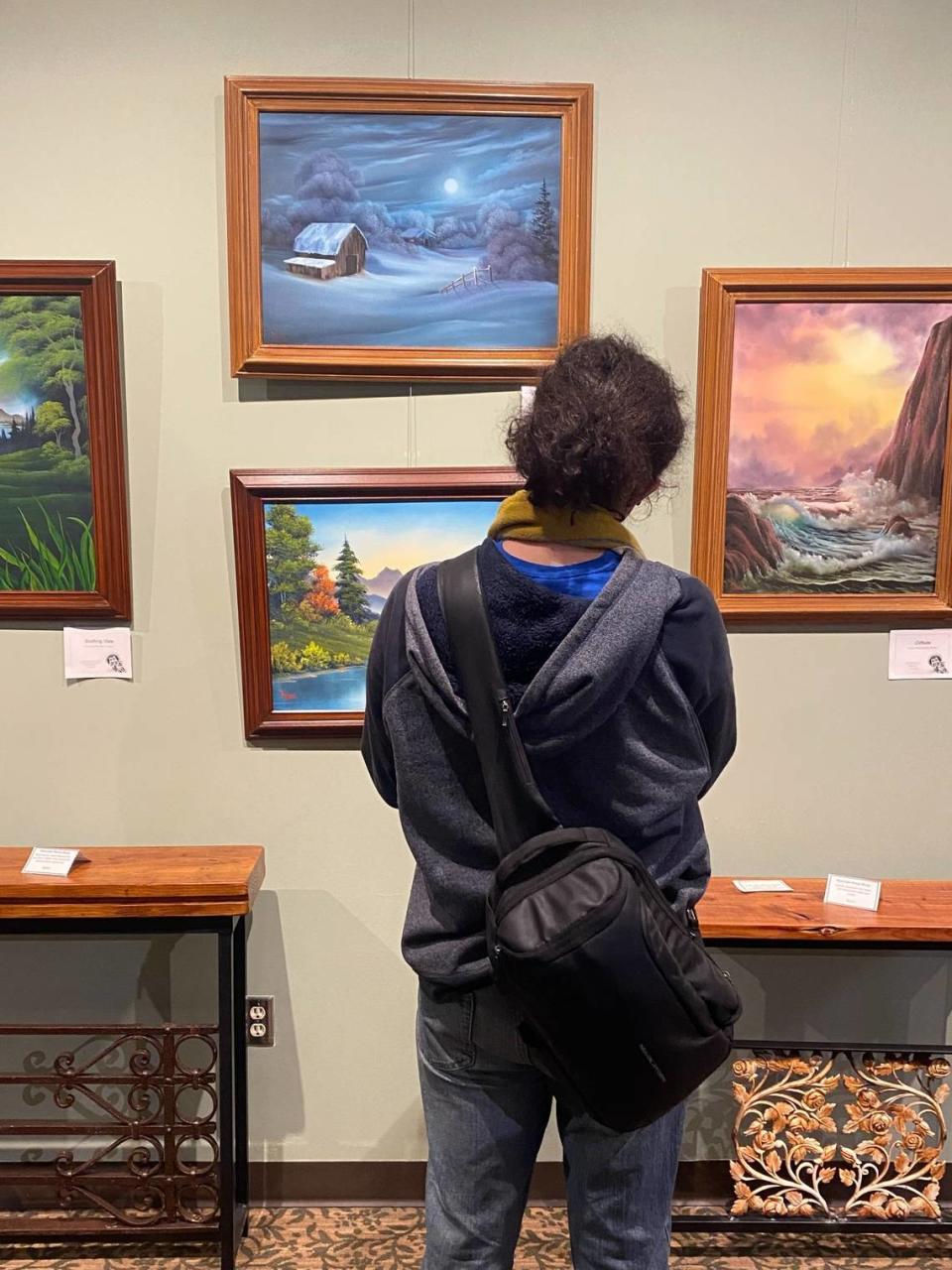World’s largest exhibition of Bob Ross paintings are in this ‘happy little’ show in NC
- Oops!Something went wrong.Please try again later.
For more than a decade, Bob Ross delighted PBS viewers with his half-buttoned shirt and magnificent perm, summoning waterfalls and mountaintops from a palette smeared with cadmium yellow and phthalo blue — soothing an anxious world with a squirrel in his shirt pocket.
In each half-hour segment of “The Joy of Painting,” he would turn a blank canvas into a wilderness cabin in the snow, or a beachfront dappled by a purple sunset, all of his landscapes populated by the “accidents’” he would lovingly personify: happy little trees, friendly little bushes.
He brought an attitude to art appreciation that shunned high-mindedness, appealing to dilettantes who confuse Monet with Manet, inviting would-be artists who had never painted anything more complicated than a bathroom ceiling to “make love to the canvas,” always offering the same reassurance:
“This is your world.”
Now, for the next 10 days, the world’s largest exhibition of Bob Ross paintings hangs at NC Wesleyan University in Rocky Mount, an assembly of landscapes attracting packed galleries of fans, all of them squinting to see the strokes of his filbert brush. At roughly 50 miles east of Raleigh, the exhibit makes for a happy little Christmas outing.

The Bob Ross art show
More than 75 Ross originals hang on Wesleyan’s campus, a tiny selection of the 30,000-plus paintings he finished before his death from cancer in 1995.
Most of those works got donated for PBS fund-raisers, but here you will find selections such as “Rowboat on the Beach,” “Trapper’s Cabin” and “Storm’s A-Comin’,” all labeled with the episodes in which they were created.
To be sure, a Bob Ross show is sure to sell tickets through kitsch appeal alone. Students at my college invented a drinking game that required a chug each time the artist personified an inanimate object, and the internet abounds with Bob Ross Halloween costumes. The souvenir counter at Wesleyan sold Bob Ross rag dolls with elaborate afros made of yarn.

But when I toured the exhibit Friday, I found serious art critics poring over the glimmers on a cliff wall and analyzing the shadows on a cypress creek. I met Wolf Gordon-Escobar, a UNC-Chapel Hill student minoring in studio art, when he gasped out loud in front of Ross’ “By the Sea.”
“He has an amazing grasp of light and color,” said the budding art student, a junior. “The way you can see the shape of his brush in the leaves on this tree, or how, on that cabin, you can see the scalloping in the wood, and it’s thicker on one side of the plank. You can see the light coming through these waves! That’s really hard to do.”

But if nothing else, the price of admission offers a glimpse into the curly-haired painter’s life off-camera. The exhibit is stocked with sandwich-board signs offering insider tidbits. Among them:
▪ Ross didn’t like his famous hair. But it became so integral to his logo that he dared not cut it.
▪ He did all 403 episodes of “Joy of Painting” for free. The money came through his lessons and how-to materials.
▪ He almost never painted people, and he was so insistent that his paintings show no trace of human activity that his wilderness cabins never had chimneys.
▪ He served as a master sergeant in the Air Force, and “having held military positions that required him to act tough and mean, Ross decided he would not raise his voice when he left the military.”
In the middle of the exhibit, a television screen showed old Ross episodes, and the viewers there in Rocky Mount sat on benches to watch with the sound turned off.
On the screen, Ross bent his head to the canvas so that the thick bush of curls mingled with a stand of firs, dragging his brush to turn a turquoise smear into a frozen lake.
Even with the volume down, you could sense the calm in his voice feel the quiet purpose in his hands, giving life to lifeless things — happily over and over.

